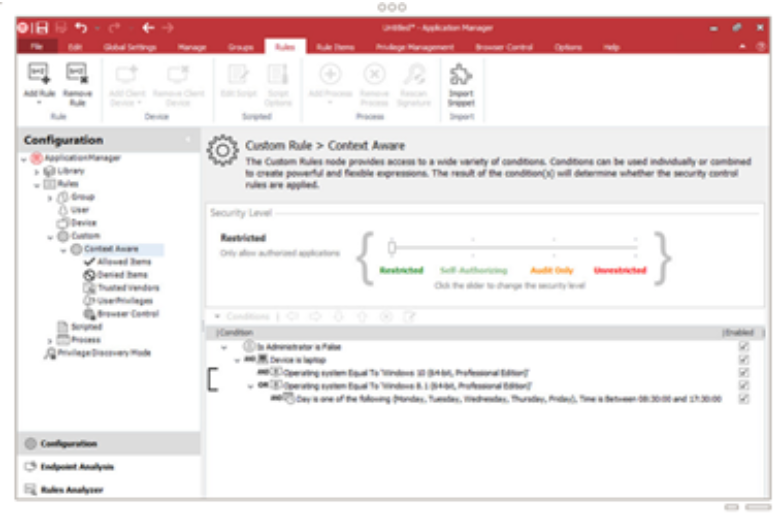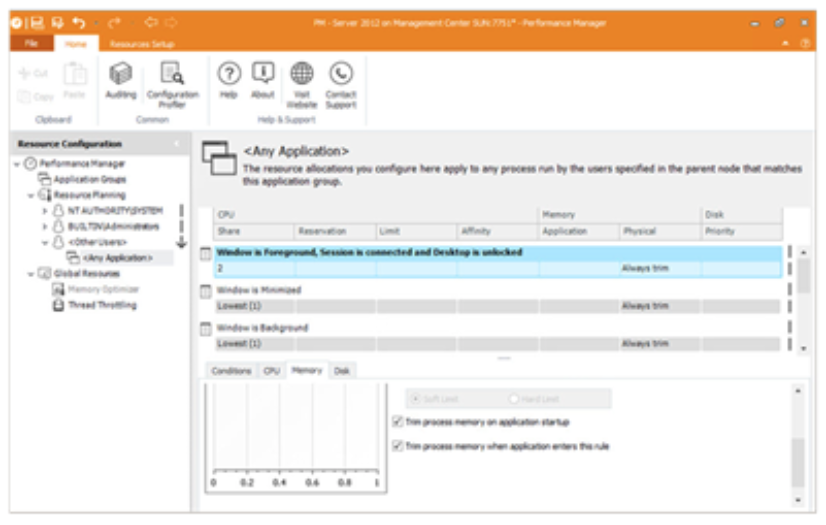Parallels Remote Application Server and Ivanti – Better Together, Pt. 3 of 3
This third and final post in the series discusses features and capabilities of Ivanti Application Control and Ivanti Performance Manager solutions running alongside Parallels Remote Application Server (RAS).
Parallels RAS, from Parallels, Inc., is the first application and desktop-delivery solution engineered to be as flexible and simple to configure and maintain for both IT Administrators and end users alike. Organizations can deliver applications and desktops to any user employing any device, anywhere.
In Part 2 of the series, we touched upon some of the security aspects of Parallels RAS, followed by details about the features and capabilities of Ivanti Environment Manager and Ivanti Environment Manager Policy. Part 1 provided an introductory overview of the benefits of Parallels RAS.
Ivanti Application Control
Ivanti® Application Control offers IT unprecedented control over endpoints, reducing security risk while providing a great user experience in the latest Windows environments. The result? A secure, controlled user workspace and better compliance.
In addition to contextual application control from Parallels RAS, the solution delivers secure Windows privilege management that lets you remove users’ full admin rights and prevents unauthorized executables such as malware, ransomware, unlicensed software, and other unknown applications from being installed or executed. Application Control also enables your IT team to manage application access and user privileges efficiently across your desktop and server estate.
Application Control uses Trusted Ownership, checking for out-of-the-box endpoint security. It relies on examining the NTFS owner of an application. If an application is introduced, and hence owned, by a non-trusted owner, e.g. a standard user, the application is prevented instantly from running.
You can assign SHA-1, SHA-256, or ADLER32 digital signatures to applications and files to ensure application integrity and to prevent modified or spoofed applications from executing.
IT can use whitelist and blacklist configurations in conjunction with Trusted Ownership to control known applications that pass the NTFS owner check. Applications that users should not have access to, such as administrator-owned tools like cmd.exe or ftp.exe, are denied automatically. Or, whitelists can be created to guarantee that only known and trusted applications can execute on a system.
Providing users with full admin rights can leave endpoints vulnerable, significantly increasing security and manageability costs, decreasing productivity, creating legal and liability issues, and making compliance difficult. By removing users’ full admin rights and providing them with elevated privileges for just the apps or tasks they need, you can simplify endpoint security, reduce support calls, and lower TCO.
Key Feature – URL Redirection: If a user leaves a web browser open on a specific web page or application and then reconnects from a new device or location, the browser can be redirected to a predefined, safe address.
Application Control is recognized by Microsoft for enforcing device-based software license control. By controlling which users or devices have permission to run named applications, limits can be placed on the number of application instances, which devices or users can run the application, when users can run a program, and for how long.

Increased Security
In addition to the Parallels RAS granular filtering, Ivanti can also add application security. This can be carried out through contextual application control by providing the right privileges to the right users even after the application is published to the end user. Protection against malware infections and unwanted application installations can be configured while enhancing compliance and the stabilization of your Parallels RAS environment with greater security and agility.
Please see here a short video of Parallels RAS and Ivanti Application Manager used for increased security
Ivanti Performance Manager
Ivanti® Performance Manager ensures every user is allocated enough CPU, memory, and disk resources dynamically to experience unsurpassed workspace performance. The result? Vast increases in the number of users per server and savings that average up to 40% of your cost on server hardware.
Key Feature – CPU Throttling: CPU thread-throttling policies trigger automatically when the system is heavily loaded. Throttling is applied gradually to any runaway threads within each process. This prevents rogue processes from consuming excessive CPU resources and reducing the quality of service for all other users on the hardware.
Key Feature – Smart Scheduling: CPU Smart Scheduler™ allocates CPU resources according to business policy by allocating a relative share to the user or application. For instance, if an application is assigned a share factor that’s twice that of a second application, the former will receive higher priority access to the CPU when there’s contention.
Key Feature – Memory Trimming: Trim working sets automatically based on application events and states, such as application startup, idle, minimized, and in the background. This effectively releases fast-access memory back to the operating system, enabling a significant increase in user density or application instances.

Increase Application Performance Control
With Ivanti, your Parallels RAS environment becomes more predictable and saves you money on hardware or cloud IAAS providers. By ensuring enough CPU, memory, and disk resources are allocated per application on the RDSH, user experience is more predictable while mitigating negative wider effects on other users on the same RDSH, which might be subjected to CPU and/or memory leaks due to issues within the applications being published.
Parallels RAS with Ivanti Environment Manager, Ivanti Application Control, and Ivanti Performance Manager can provide the complete solution for your business to deliver any application securely—with granular security and personalization in a consistent manner across to any user running on any device, anywhere. It’s also worth mentioning Ivanti Self Service capabilities, which can be used by organizations looking at reducing IT support overhead and empowering their end users.
Please see here and here short videos showing Parallels RAS and Ivanti Self Service capabilities for application and permission access.
Outlook Caching
One of the most common use cases for roaming application caches between sessions in a non-persistent environment is roaming Outlook OST Cache files. Many organizations are publishing Microsoft Outlook hosted on RDSH published through Parallels RAS. Ivanti is helping customers by allowing roaming of users’ Outlook cache between user sessions in a non-persistent VDI/RDSH setup. This allows Cache to be configured as ‘Cached Exchange Mode’ to provide better user experience and help users be productive instantly following migration to Windows 10 or Office 365. This approach can be further extended to similar applications including Java Cache, OneDrive, and Skype.
Choose your trial experience for 50 concurrent users, ranging from: 1) trial in the cloud (on Microsoft Azure or Amazon Web Services); 2) trial in a box with a single, all-in-one virtual machine readily configured; or 3) a traditional trial that can be installed on your servers in your own data center.
BLOGS IN THIS SERIES:
